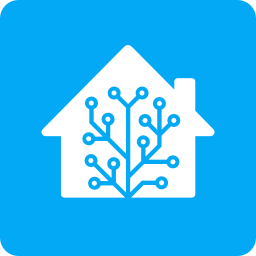I’m on supervised install on Ubuntu server. All worked fine for many years, except Supervisor being bitchy about me having Portainer installed for no reason. Last week or so, my machine started acting weird. After reboot I couldn’t access it via local ip, only via external hostname. What keeps happening is after reboot Supervisor creates new network config for my ethernet, that causes this. It uses the network-manager to do this. I have netplan doing the config. Nyone else?
This seems reasonable to me?
If you’re running it that way you still can, they’re just not going to accept bug reports or have end user docs anymore. All the developer docs will still cover it.
It’s an open source project and they need to focus their energy on known good configs.
It’s reasonable for an engineering standpoint. Bummer for people who don’t want to run HASSIOS or install HA on an already provisioned system without having to fuck with docker.
Docker is so much easier to fuck with than python
I seem to be unable to wrap my head around Docker. I have one application running through Docker (Immich) but I have no idea how it works. It’s running, and until further notice, I ain’t touching it.
I have Home Assistant running through an instance on my Proxmox server. That I can understand much better than anything Docker.
It’s worth taking the effort to learn if you want to self host stuff. The neat part is once you learn it, you can self host basically anything. Think of a container like a little packaged application that can only interact with the outside world through pathways you give it, either through volume mounts (files) or port mappings (network).
Immich is one of the more complicated and intimidating docker-compose files out there. Try something like glance or miniflux to get a gentler introduction.
So far I’ve created a new ProxMox container for each application I wanted to run. So I have pihole running in an LXC, Nextcloud in another LXC, Audiobookshelf in yet another LXC, Home Assistant in a VM, etc.
I’m sure that could be done more efficiently with Docker, but for some reason that just doesn’t want to click. I don’t know where the applications end up installed at, I don’t know how to configure stuff, nor how to run multiple docker containers on the same machine.
Immich is the first application I have managed to get running full time in Docker, but I’ve already encountered an issue with uploads that I can’t solve, because I have no idea where to find the config files, nor how to restart it. So I’ll leave it as is, for now. Maybe when my brain can get engaged, I can try again.
Docker is the same thing as executing the runtime of the same program.
WITAF are you even talking about?
From a fuckery standpoint? Docker is way easier, and it works the same way for everything.
It’s literally the same thing as running the app from base repo. There is no “fuckery”. The entrypoint of a container is the same as just running the python runtimes for any project. You have zero idea what you’re talking about.
No it’s not and yes I do you goober. How are dependencies handled in each scenario?
pip install for both. Apparently you are new to 'puters. Go play elsewhere.
Yeah, easiest way to turn me off a project is pushing black box installers. Don’t trust software that tries hiding what its doing.
What turns me off is software that insists on running with unreasonable privileges. Rootless podman containers are the way to go – you can decide the privileges of the user account running the container, and the container image is inspectable (and tweakable if you find something you don’t like). And for the devs, maintaining (just) a container image is way less overhead than managing distribution-specific packages for 5 different package managers and dozens of distributions
Well that’s not really an issue since it’s open and you can see what it’s doing anyway.
Fortunately:
No support for Core or Supervised—can I still use them?
You can still use them even if we no longer support them. There are many users running Home Assistant in all kinds of unofficial ways. This change just means we are removing it from our end-user documentation and will no longer recommend using these installation methods from an official standpoint.
Will the developer documentation on these things remain?
Yes, those will remain. The developer documentation for running Home Assistant’s Core Python application directly in a Python virtual environment will remain. This is how we develop. This proposal is about removing end-user documentation and support.
Gotta admit, it was a bit difficult to get my head around all the different installation types when I was a new user, so simplification is probably well over due
They’ve done this once before and walked it back.
Out of that decision and the backlash came the metrics, so they’d be able to make informed decisions before depreciating something.
Last time, I used Core (IIRC, it wasn’t even called Core back then) and was quite upset. Before they walked it back, I switched to the OS version and don’t really regret it. If their metrics now tell them that core isn’t worth supporting, it probably isn’t, but I definitely understand being upset about it.
It definitely sucks that the system that’s supposed to be about giving users freedom and options is removing some.
ETA: Backups also make this whole thing so much easier now. Back then, backing up and restoring core meant manually copying a bunch of files, but now, it’s a completely different and easier experience.
I jumped through all their hoops for a Supervised Debian 11 install. It was a massive pain in the ass, and they dropped support for 11 back in October. 0/10 would not recommend.
@lemming741
Absolutely!If your first priority is having a Supervised Debian 11install.
I wanted to have Home Assistant in my house and my RV and my perspective is more like using it like an appliance, as I still had a Raspberry 3 lying around, i downloaded an HA-OS imageand was up and running within minutes. Once I was convinced that it was what I needed I went for the Pi 5 with SSD.
So 10/10 for me.
We have deprecated […] Home Assistant’s Supervised installation method, which involves running your own operating system, then installing the Supervisor and other requirements on top of that.
Tell us you can’t architect software like a first-year without using those words. Proper packaging has been out for 30 years.
My foray into self-hosted home automation was set to begin, but if they can’t release software like adults then fuc–uh, good luck to them.
@corsicanguppy
Tell us that you have no idea how many flavors of Linux there are in the wild, each one with its own set of dependencies and bugs without using those words.Nobody is paying Nabu Casa to validate their packages for a gazillion Linux declinations, we rather like them to pay their developers to work for all the users rather than for a 0.01%er with yet another exotic setup.
Check out OpenHAB. They already have containers available right on their downloads page.
I just switched from that because it is a disorganized mess. no real account system. no custom language per user. authentication is an afterthought the main page loads without logging in. but the dashboard is less capable true: there is not even a thermostat widget that’s anywhere near as what hass has.
wherever I look, hass definitely looks more organized and deliberate. ok, except scripting actions, but that’s it.
also, I don’t understand what corsican wants to say, so maybe we have different needs.
If you use the image from the Docker repository, that is still supported.
Home Assistant has so many moving parts, so I don’t complain. I do wish containers would become first class citizens like the OS, because some stuff is just harder in containers. The only thing I can think of as to the “why” is because of how the OS project installs software, but that’s an easily addressed problem so it must be something else.
Still, it’s nice to know the container method is moving forward; I’m so done with installing specific OSes just to use some given piece of software.
I do wish containers would become first class citizens like the OS, because some stuff is just harder in containers.
Like, for instance, security and validation against a SBoM. And that’s why this container shit needs.to.die . But, downvote and move on, and hope by the time you need it the machine that goes ‘beep’ by your hospital bed is built using methods better than “this will look great on my resume.”
Containers can provide SBoMs too and in comparison to HA OS, which is what the comment was referring to, container and core give you better control over the application allowing for more security mechanisms. Comparing container vs core for security is interesting cause container gives you some security features for free like seccomp, cap drops, namespacing, etc. which you don’t get for free with core.
I find the claim that core is more secure than a container because it has an SBoM as dubious, but maybe you’re talking generally about containers vs distro package managers.
This is how absolute hacks develop software.
We’re 20 years in past the death of mentorship in software dev, so we have a lot of mistakes to repeat because we’re short-sighted sparkle-junkies. Only 50 years to go, so stock up on bitcoin and hopefully the ‘breathe’ micropayment system on your oxygen tent will still work enough.
Wait, does this mean they’re deprecating the docker image?
Nope
You didn’t even read the article, did you?
We have deprecated the following installation methods:
Home Assistant Core installation method, where you run your system in a Python environment, not to be confused with Container (for example, running your system in Docker).
Home Assistant’s Supervised installation method, which involves running your own operating system, then installing the Supervisor and other requirements on top of that.
Nope. Docker and Home Assistant OS will be the only supported installation strategies









